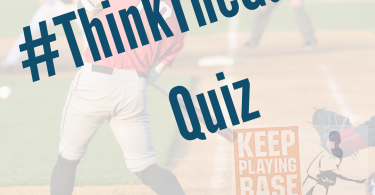The Situation:
It’s the start of the third inning of a Friday night battle between two aces. It’s a rivalry game and emotions are high. Each starter has electric stuff and has been nearly unhittable all year. Both teams know that runs will be at a premium. At the start of the game, the visiting team assigns bench players with different tasks, everything from charting to trying to pick coaches’ signs. Before the top of the 3rd, the players tasked with observing the opposing pitcher think they have figured out a way the pitcher is tipping his pitches. Every time the pitcher straightens his glove hand index finger (sticking out of his glove), he throws a fastball. When the glove hand index finger stays pressed against the outside of the glove, it’s a breaking pitch. They confirm their suspicions during the warm-ups and inform the leadoff hitter for the inning.
The Play:
The leadoff batter has a great at bat. He gets to a 2-2 count. The pitcher thinks he has him set up perfectly for his wipeout slider, and usually he would. As he gets the sign and goes into his delivery as the right-handed batter watches the finger. He recognizes the finger flush against the glove and knows the slider is coming. The pitch is nasty, and despite knowing it’s a slider, he still almost swings. Luckily he is able to check his swing, as the pitch dives out of the strike zone and into the dirt. On 3-2, he recognizes the stiff finger and incoming fastball. The pitch comes zipping into the zone on the outer half. It’s not the best contact, but the batter slaps a chopper through the right side for the first base-runner of the game.
The Outcome:
Forced into the stretch for the first time, the pitcher struggles to command the zone. After a walk and a sac bunt, the offense continues to lay off the slider early in the count and take the quality ‘chase pitches’. At the end of the top of the third, they have staked out a 2-0 lead and upped the starters’ pitch count by a significant 26 pitches. Later in the game, they are able to scratch another run and chase him out of the game with a high pitch count in the 6th. They eventually tack on two insurance runs and hold on for a 5-2 win.
What Went Wrong:
Even the best players fall victim to bad habits at times. We often hear about the benefits of strict routines for great pitchers. The tendency to create strong patterns can also make a player unconsciously fall into a bad pattern or poor habits, as well. This is what we see here. The pitcher shares his mistake with his teammates and coaches, who did not notice he was tipping his pitches during the course of the game. Watching your own players as intently as you watch your opponent can help prevent make these types of mistakes.
As much as this is a mistake on the part of the pitcher and his team, it is also a huge victory for the offense and visiting bench. Anytime you have players on the bench contributing to the team in such a huge way, it’s an incredible advantage. The importance of a good bench and having players invested in the outcome even when they are not playing can’t be understated. This isn’t just a story, we’ve seen this very scenario make the difference in the outcome of games at the college level before. We’ve also seen other positions tip pitches, like in this think the game scenario.
Want more information on tipping pitches? Watch this segment.
The big lesson here is to win the battle of the bench and have your entire roster working together for the win. If everyone on your bench is involved and thinking the game, you will improve your chances to win dramatically and the game will be more enjoyable for everyone involved, bench players included.







